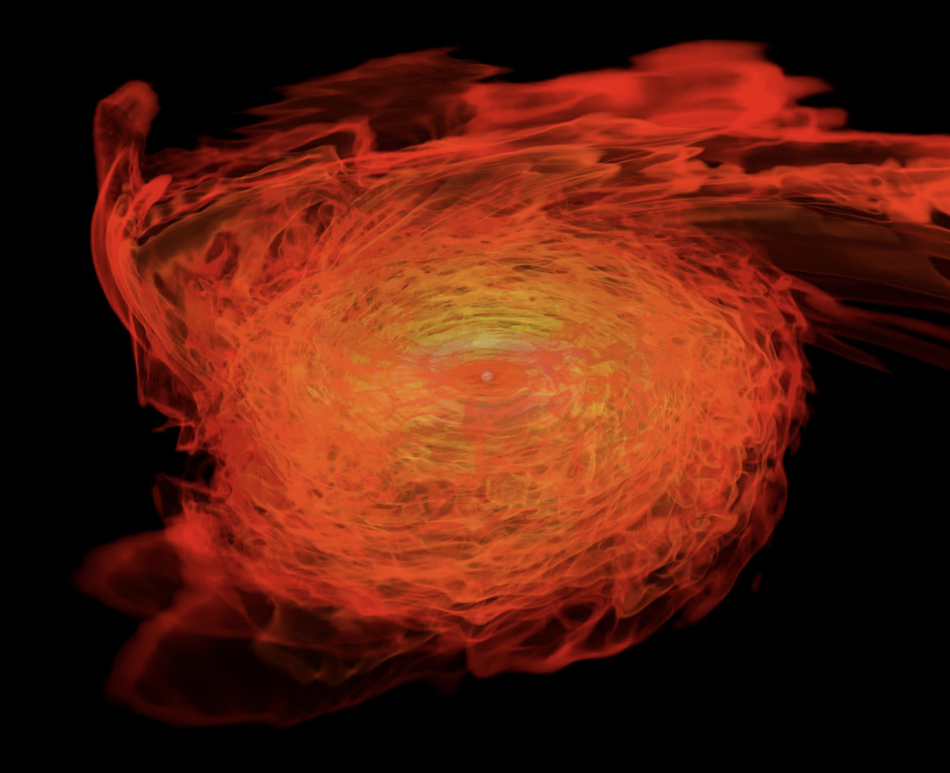Congratulations to Dr. Veronica Dexheimer for her recent publication in Physical Review Letters and editor's suggestion in Physical Review C.

In her first paper, Dr. Dexheimer and collaborators demonstrated a new way to determine the equation of state that describes the interior of neutron stars by using data extracted from LIGO and Virgo detections of the gravitational waves produced by neutron star mergers. These gravitational waves encode the neutron stars’ tidal deformability, a measure of how much the stars deform before merging, which is associated with their radii. Furthermore, a relation between the tidal deformability of both stars, the so-called binary Love relation, is used by the LIGO/Virgo collaboration to determine the original radii of the merged neutron stars. Dr. Dexheimer and collaborators provided new insight into the physics behind the binary Love relation in two ways. First, they showed how the slope of the binary Love relation is sensitive to sudden increases and decreases in pressure, and is correlated with gradual changes in particle composition or interactions. Second, they showed that steep phase transitions, usually associated with the sudden deconfinement of quarks in the inner core of neutron stars, dramatically change the shape of the curve in the binary Love relation. The newly found curve structures were named "hill", “drop”, and “swoosh” because of their shapes (and to keep in line with the ski language inspired by the term “slope”). Allowing the equation of state to induce such relations can affect, for example, the extraction of neutron-star radii performed by the LIGO/Virgo collaboration. For more information see the University of Illinois press release here: https://icasu.illinois.edu/news/46629. The published version of the appear can be obtained here, Physical Review Letters, and the arXiv version of the paper can be obtained here, arxiv.org/abs/2111.10260.

A second paper by Dr. Dexheimer and a different set of collaborators recently received an "Editor's Suggestion" from Physical Review C. In this work, they investigated how the presence of subatomic particles called Delta baryons affects the super-dense matter in magnetars — neutron stars with incredibly strong magnetic fields. Such strong magnetic fields can modify the microscopic composition of matter, which can then change macroscopic stellar properties. For magnetars, this means that the presence of certain particles could affect their masses or sizes, and even how they evolve over time. One family of particles that could have such an effect is Delta baryons — particles with different spin than protons and neutrons that, unlike them, can carry three down quarks. Because of this, they are more affected by the magnetic field. Using two different models, the Dr. Dexheimer and her collaborators investigated how Delta baryons, and another category of (strange) particles called hyperons, could affect magnetar structure. They found that Delta baryons don't have much influence on the magnetic field distribution inside the stars, but that their presence decreases stellar radii — which better matches modern observational data of neutron star (than models without Delta baryons). These findings further researchers' understanding of the exotic matter, which does not exist in stable form in our planet, but might be common inside neutron stars. The published version can be obtained here, Physical Review C, and the arXiv version of the paper can be obtained here, https://arxiv.org/abs/2205.09827.



